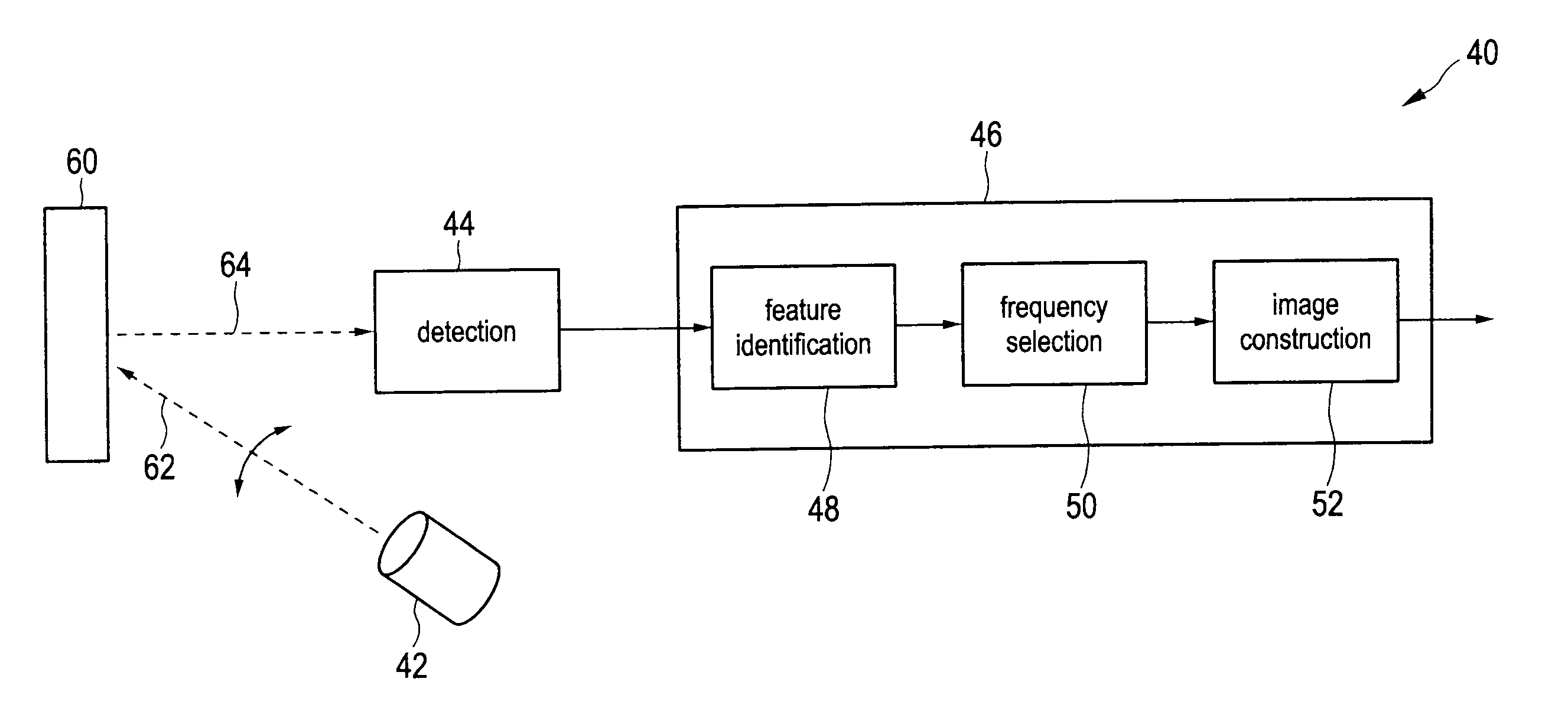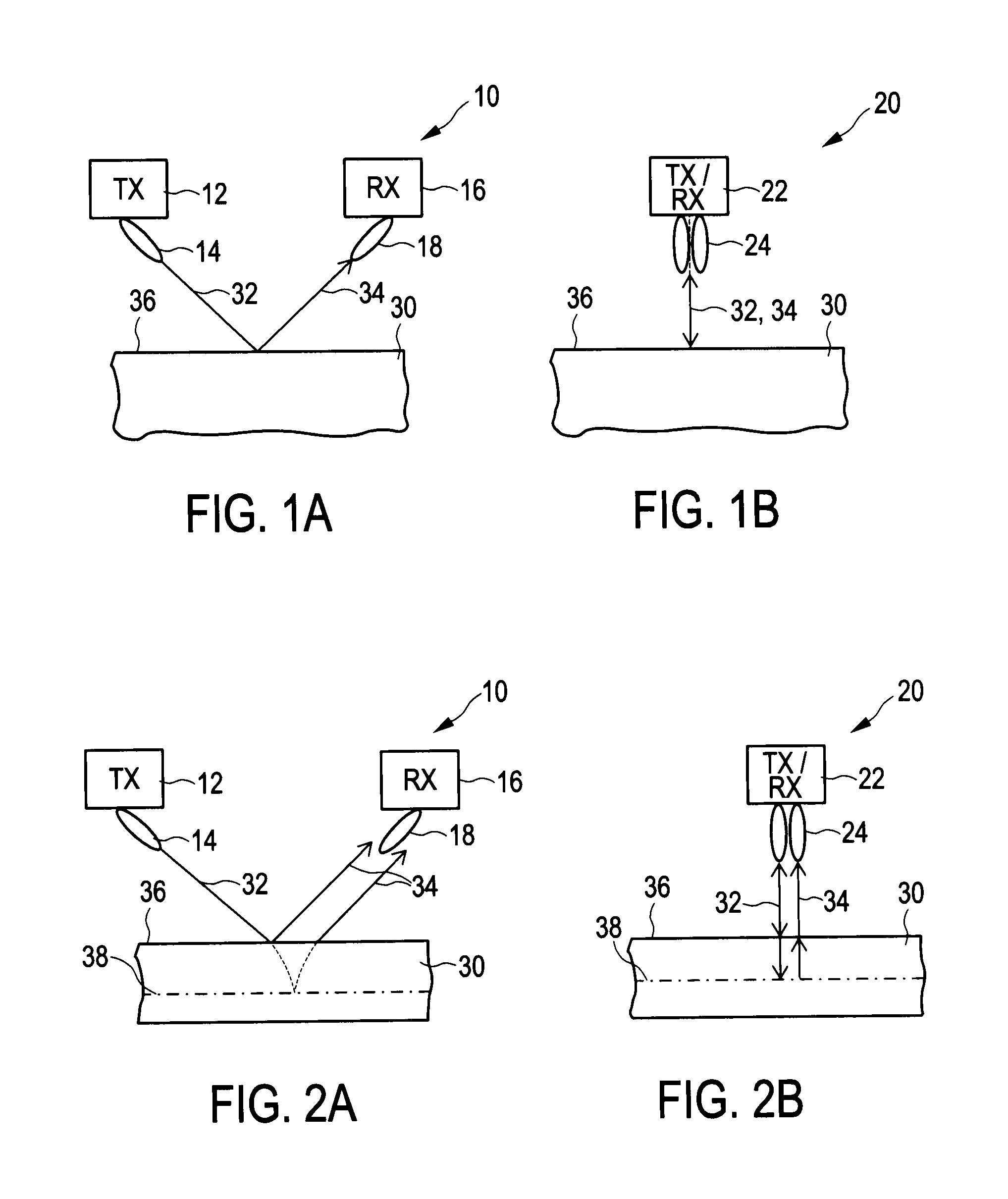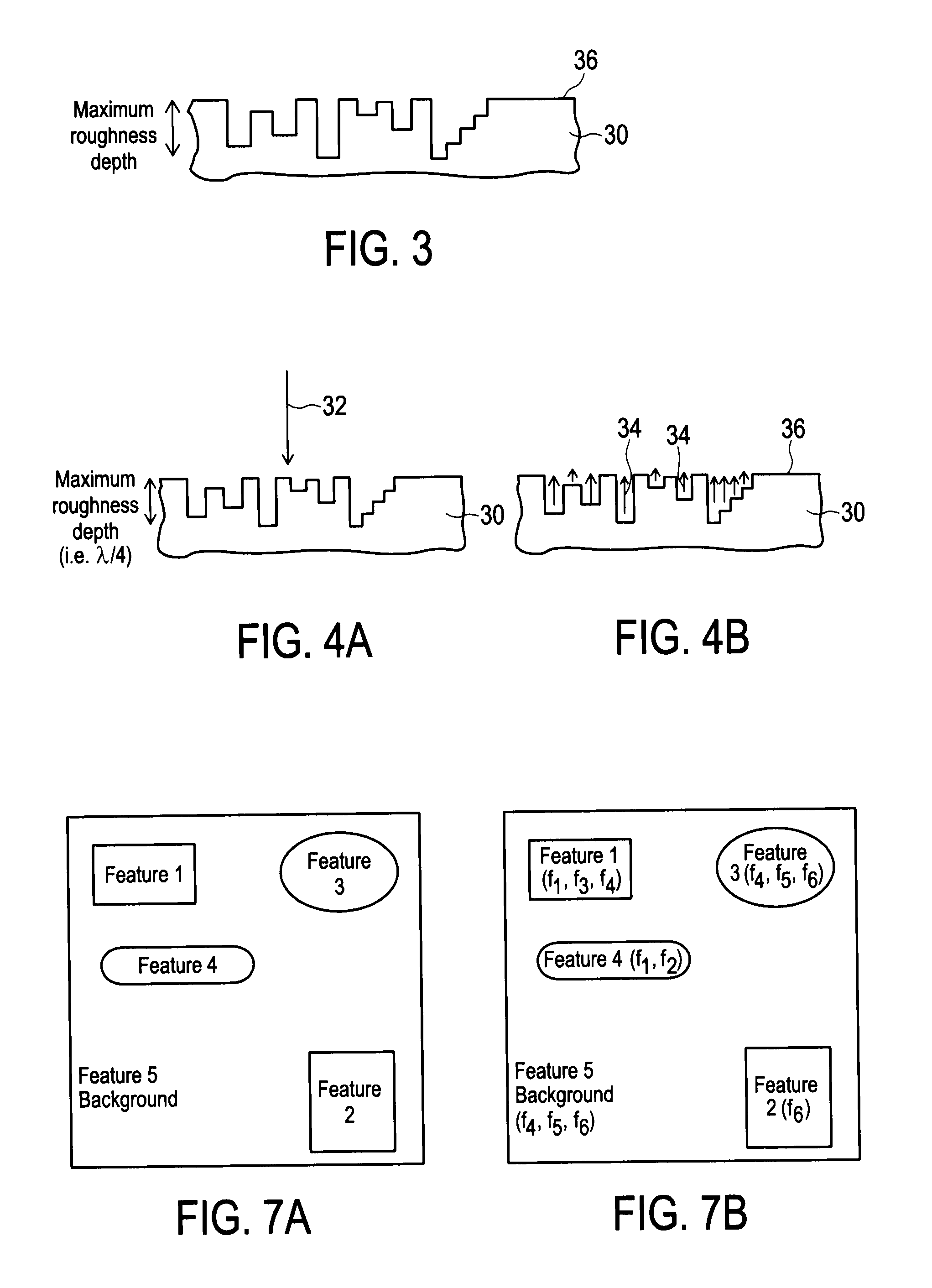Active imaging device and method for speckle noise reduction
a technology of active imaging and noise reduction, which is applied in the field of active imaging devices, can solve the problems of inability to use active imaging techniques, random fluctuations in return signals, and degrade the quality of images obtained by active imaging devices, and achieve the effect of small effort and effective reduction of speckle nois
- Summary
- Abstract
- Description
- Claims
- Application Information
AI Technical Summary
Benefits of technology
Problems solved by technology
Method used
Image
Examples
first embodiment
[0035]FIG. 1 shows an active imaging device,
[0036]FIG. 2 shows a first embodiment of an active imaging device,
[0037]FIG. 3 shows a diagram illustrating a rough surface of an object,
[0038]FIG. 4 shows a diagram illustrating the generation of speckle noise on a rough surface,
[0039]FIG. 5 shows a first embodiment of an active imaging device according to the present invention,
[0040]FIG. 6 shows a flow chart of a first embodiment of an active imaging method according to the present invention,
[0041]FIG. 7 shows a diagram illustrating feature selection according to the present invention,
second embodiment
[0042]FIG. 8 shows an active imaging device according to the present invention, and
[0043]FIG. 9 shows a flow chart of a second embodiment of an active imaging method according to the present invention.
DETAILED DESCRIPTION OF THE INVENTION
[0044]Active imaging systems are becoming increasingly more popular at ultrasonic, microwave, millimetre and terahertz frequencies for a number of applications including medical and security applications.
[0045]The arrangement of transmitter and receiver in an active imaging system may take on many different forms, but in the most general sense active systems use a transmitter (generally an “illumination means”) to illuminate the object (or item, in general the “scene”) to be studied by transmitting at the frequency (or frequencies) of interest and analyse the received signal due to reflections and / or transmission characteristics of the object. The present invention is primarily directed to active imaging using the reflected signal, although the idea...
embodiment 40
[0068]To simplify the explanation it has been assumed that the transmitter (or illuminator) is subsequently illuminating the object using multiple discrete frequencies. The proposed imaging method can, however, also be used when the transmitter is using a wideband illumination signal coving a frequency band Δf (i.e. not consisting of discrete frequencies), such as would be produced from a pulse based active imaging system, or when the transmitter is using a illumination signal simultaneously comprising a number of discrete frequencies or small frequency bands). A corresponding embodiment 40′ of an active imaging device is depicted in FIG. 8, a corresponding embodiment of an active imaging method is depicted in FIG. 9. In this case the illuminator 42′ illumination the scene 60 with the wideband illumination signal (step 510′), and the detector 44′ receives a single detection data set (step S12′).
[0069]In this case the processor 46′ would need to examine different frequency components...
PUM
 Login to View More
Login to View More Abstract
Description
Claims
Application Information
 Login to View More
Login to View More - R&D
- Intellectual Property
- Life Sciences
- Materials
- Tech Scout
- Unparalleled Data Quality
- Higher Quality Content
- 60% Fewer Hallucinations
Browse by: Latest US Patents, China's latest patents, Technical Efficacy Thesaurus, Application Domain, Technology Topic, Popular Technical Reports.
© 2025 PatSnap. All rights reserved.Legal|Privacy policy|Modern Slavery Act Transparency Statement|Sitemap|About US| Contact US: help@patsnap.com



